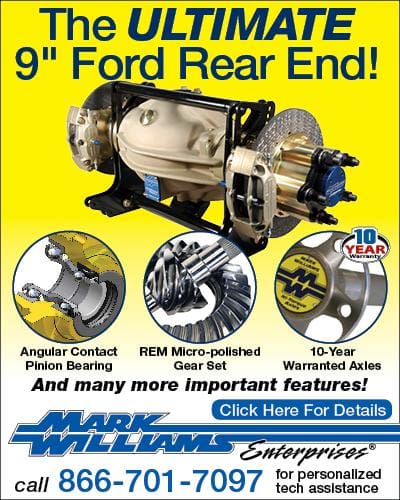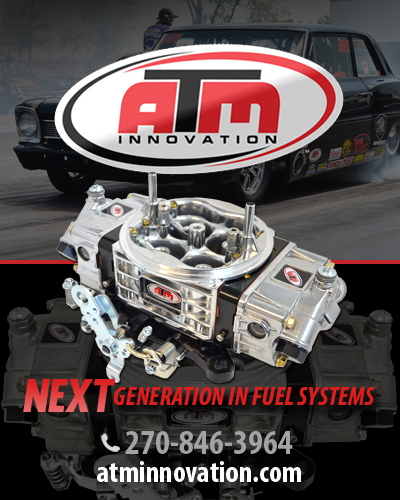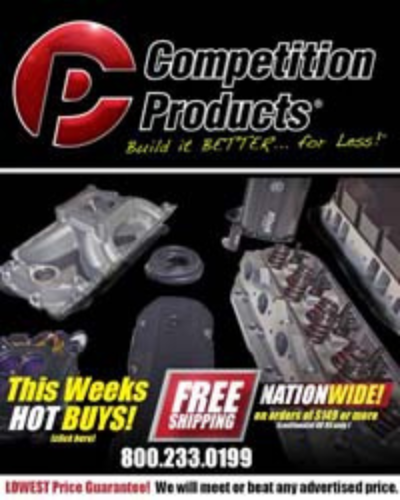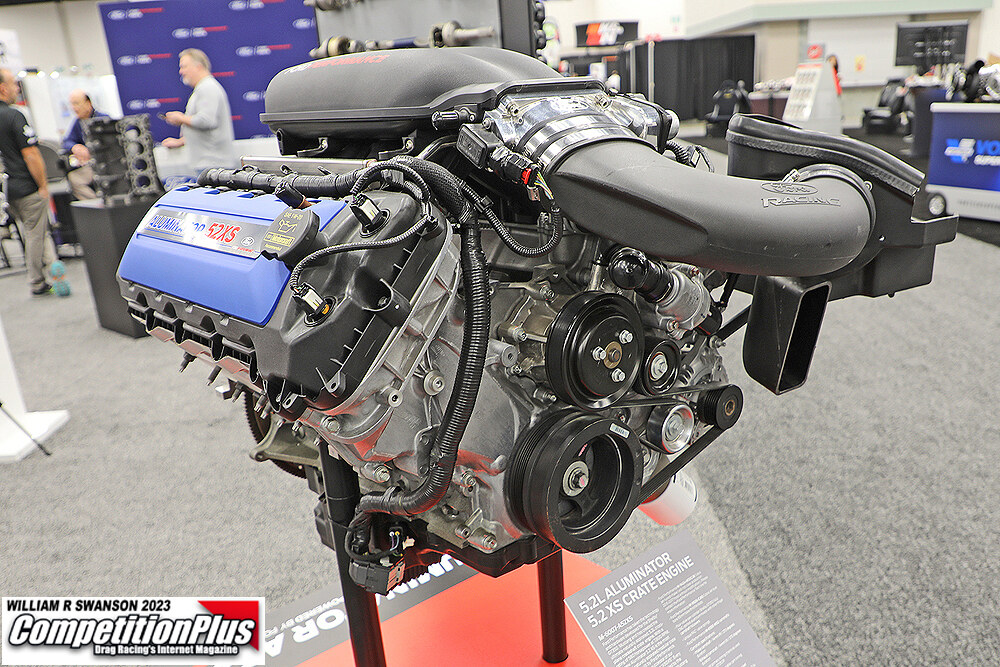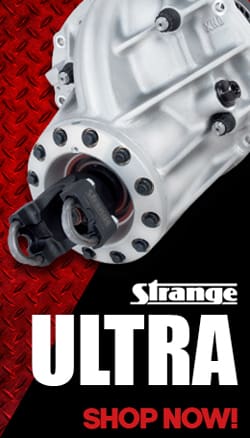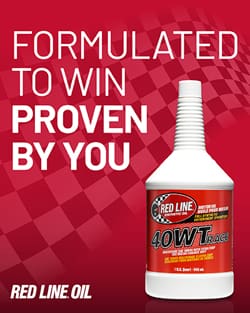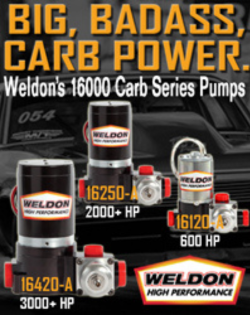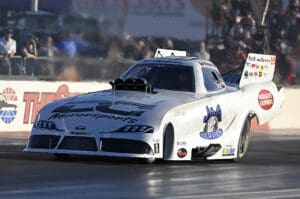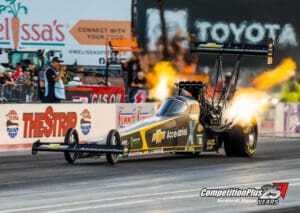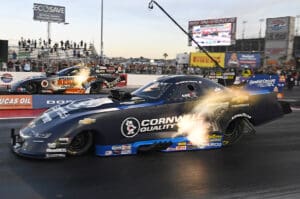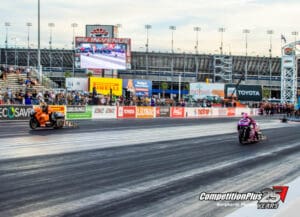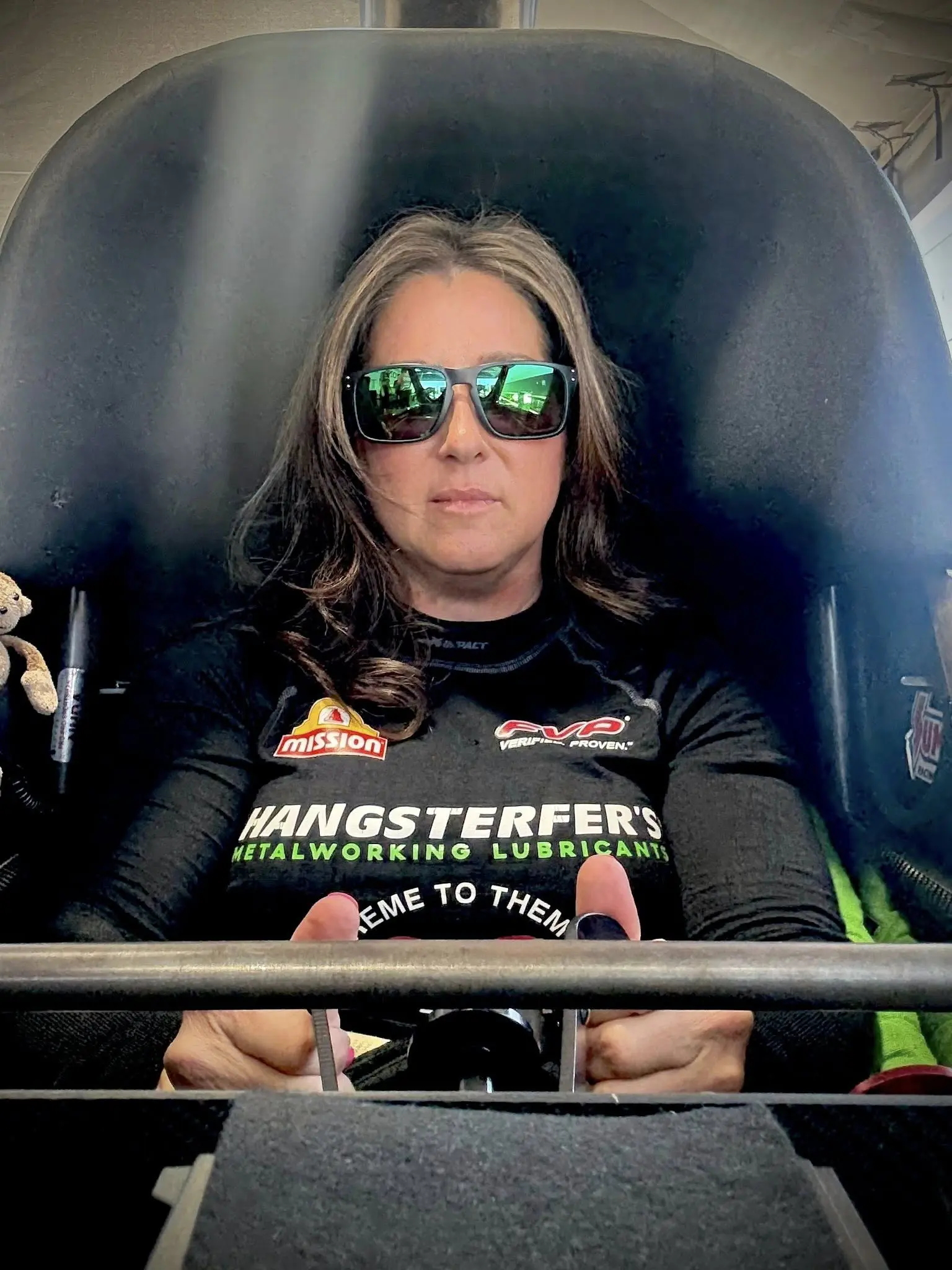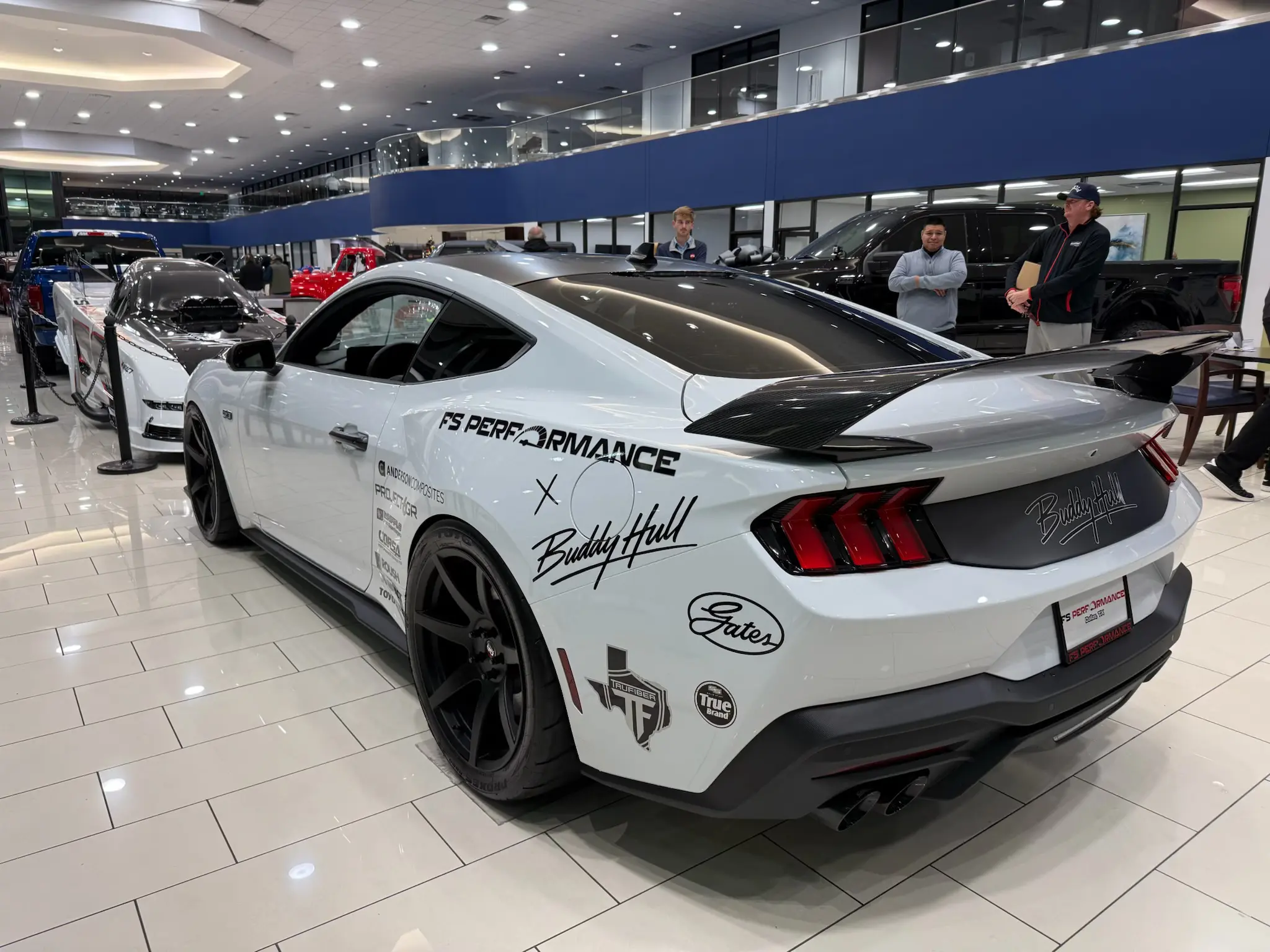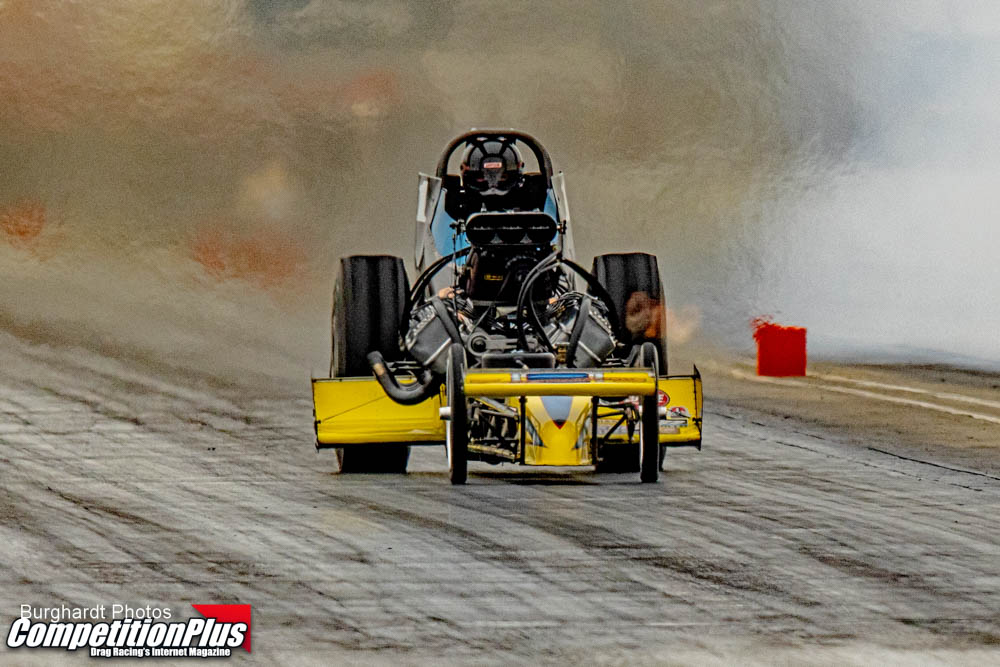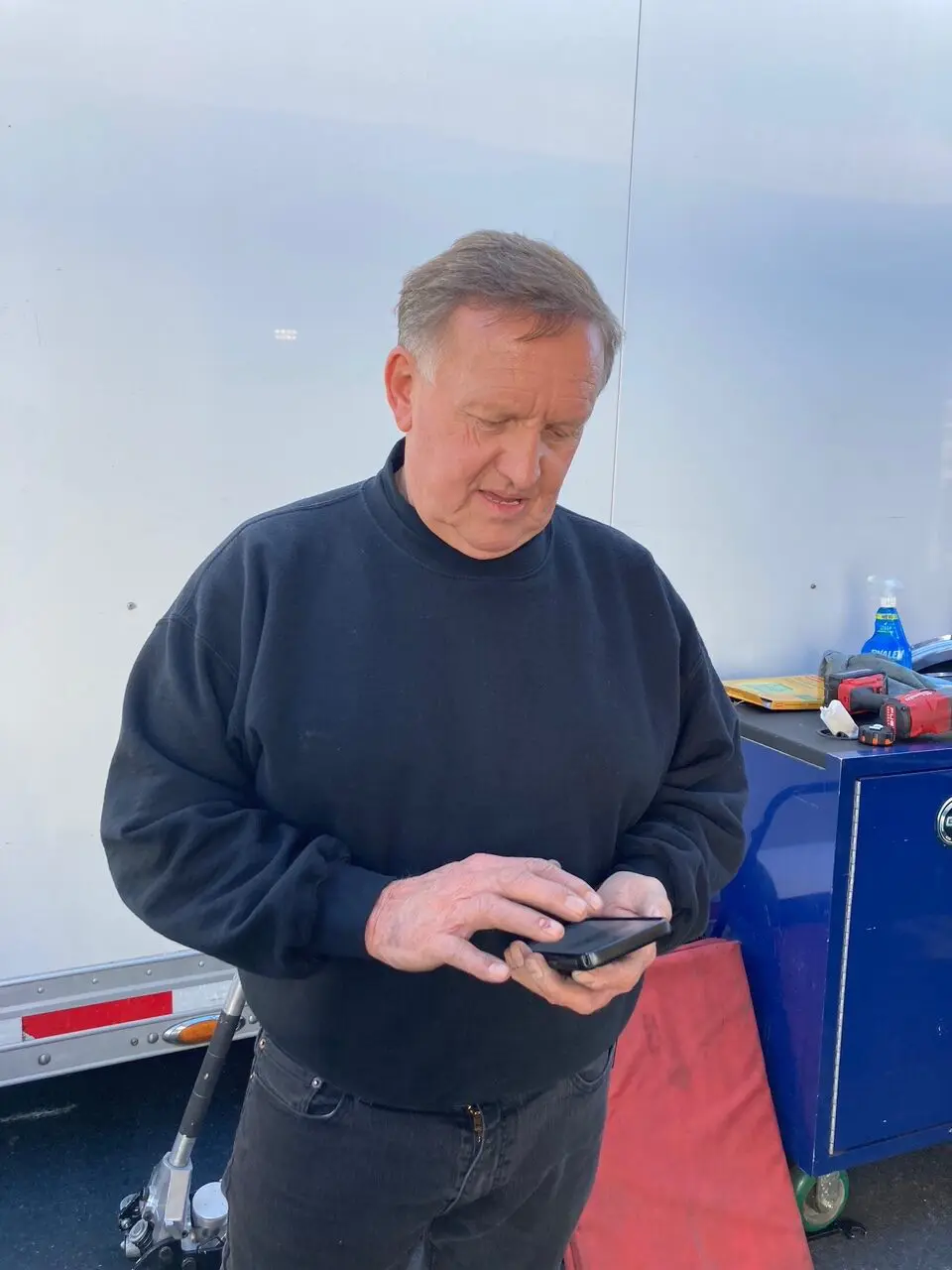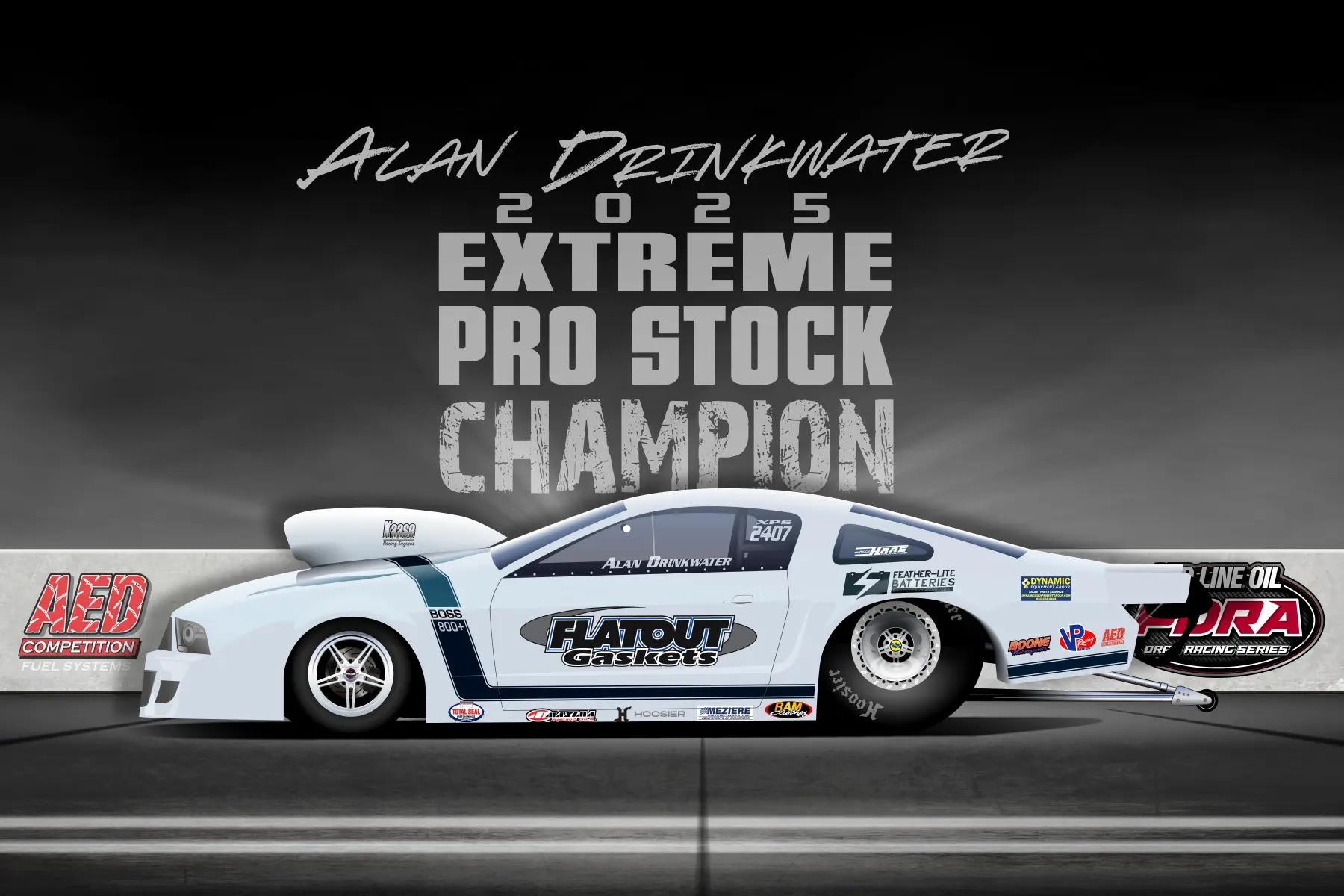
 Doug Herbert remembers it like it was yesterday.
Doug Herbert remembers it like it was yesterday.
After all, it’s hard to forget a Top Fuel engine detonation that set him back $100,000 — in 1999 dollars.
“One of the things that sticks out most in my mind is Connie Kalitta coming over and saying, ‘Dougie, that’s the worst I’ve ever seen,’ “ Herbert said. “And I thought to myself, ‘If Connie Kalitta told me that’s the worst he’s ever seen, that’s probably the worst there’s ever been.’ “
Herbert’s starting line explosion occurred the moment he stabbed the throttle on a Friday qualifying run for the NHRA World Finals, the 20th anniversary of which is this weekend at Pomona, Calif. The explosion’s fireball vanished almost as quickly as it appeared, and video of the incident provides a vivid reminder of the dangers of nitro racing.
At the time, there was no limit on the percentage of nitromethane that Top Fuel and Funny Car teams could pour into the tank for a run. Most teams, Herbert recalled, were using 94 to 98 percent nitro mixed with alcohol, and some even utilized a full 100 percent dose.
“Ninety-nine was the first year everybody started having electronic ignitions,” he said. “So the ignitions were a lot hotter, which meant the fuel pumps got a lot bigger and the blowers were starting to get better. It was making a better bomb.”
Herbert said his fuel tank held a “98 or 99” percent nitro load that Friday morning. He had encountered a problem on his Thursday qualifying attempt — “smoked the tires or something” — but when he came to the water box on Friday, he obviously was not expecting to produce a fireball unlike few ever witnessed.
“I was pulling up to the starting line, and I could tell the engine was running a little rough,” he said. “So I just kind of trimmed the fuel back and thought it would kind of clean it out a little bit. Obviously, it didn’t.
“It was an ignition problem, is what it was. We’d never seen that before — nobody had.”
The explosion did extensive damage behind Herbert’s rollcage. The list of destroyed or damaged components is a long one.
“The whole top of the engine was gone,” Herbert said. “We had an engine diaper and the crank was laying in it. Pieces of the block were gone. The injector was turned to dust, and so was the intake manifold. The valve covers were obliterated. The frame rails on the car were blown out.
“It was almost a complete loss, everything that was involved in that explosion.”
 That was far from being the extent of the carnage.
That was far from being the extent of the carnage.
“Me sitting in the car, I knew it was bad. It blew my face shield off my helmet and burned my eyebrows and eyelashes,” he said. “I had a cut in the back of my neck and a cut in my foot. It cut through my firesuit and my racing boots. I had big bruise on that foot for awhile after that.”
Those minor injuries were the least of Herbert’s concerns at that point. He said he “got sick” when he looked toward the grandstand and saw paramedics rushing to treat fans who had been struck by engine shrapnel.
“I thought, ‘Oh, no.’ We know we take a risk driving the car, and the last thing I would ever want to do is hurt a fan that was there watching the races,” he said.
“That took me to my knees. I was just so distraught to know that we had hurt somebody. Luckily, I found out later nobody got seriously hurt, so that was good.”
And then came the somewhat humorous aftermath the following morning.
“I had one guy come up the next day who had a little bandage on his head. He said, ‘Yeah, man, I went to the hospital yesterday and I got four stitches. A piece of your blower hit me in the head.’
“I went, ‘Oh, my gosh, I’m so sorry. What can I do for you?’ He said, ‘Can you autograph this piece of the blower?’ I said, ‘Yeah, absolutely. Are you gonna sue me? He said, ‘Hell, no!’ I said, ‘Come over here and I’ll fix you up with a hat and a T-shirt.’
“Luckily nobody got hurt and it was definitely a wake-up call for the sport. A couple of weeks before, Eddie Hill had just completely leveled his engine, and there were a bunch of guys that were doing that. When you run 98-99 percent nitro, even 100 percent nitro, it just gets where the nitro will detonate or fire even when it’s not supposed to, and that’s what happened.
In the aftermath of that incident, NHRA made multiple rules changes, all of which Herbert said were great decisions.
“They did the 90 percent rule, but they also changed the blower restraints, the way the valve covers are mounted and the restraints there, they changed the diaper on the bottom of the car, they started going to heavier frame rails. There were quite a few things good that happened because of that,” he said.
Herbert couldn’t get his back-up car into the eliminator field, which combined with the explosion and its extensive, expensive damage, ended what had been one of his best years on a sour note. He had won four NHRA national events iHouston, Columbus, Topeka and Memphis) n six final-round appearances, and he captured an IHRA event at Rockingham.
“We had a really, really good year,” said Herbert, who won 10 NHRA and 20 IHRA races in his career. “And to end up blowing up, having to go to a back-up car and no qualify, it was pretty bad.”
But …
“I ended up making a poster out of a picture of that explosion, and 20 years later, I still sell the poster. People still think it’s cool because it was just such a dramatic explosion. It was just ‘Pow!’ and that was it. There was just nothing left.”










